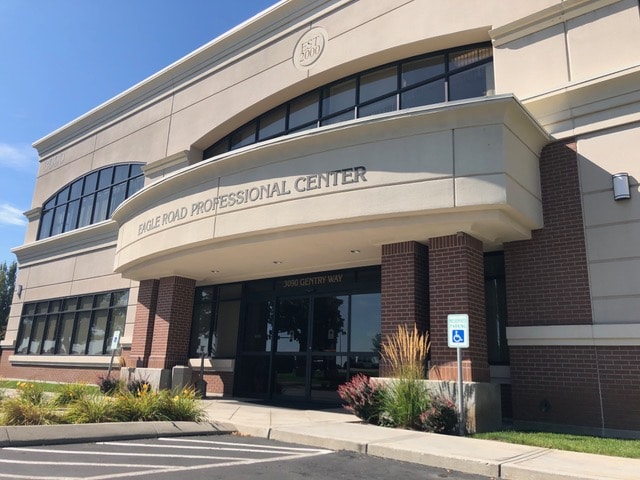Reduction Mammoplasty
Reduction mammoplasty, or breast reduction, is one of the more commonly performed plastic surgery procedures and one that Dr. Jarrell frequently performs.
Women who are unhappy about having large breasts and/or want to treat symptoms such as back, neck or shoulder pain, breathing problems and poor posture, may benefit from reduction mammaplasty. Women may experience a spectrum of other effects or symptoms from their large breasts including rashes underneath or between breasts, difficulty with daily activities or exercise, difficulty finding clothing that properly fits or even feeling self-conscious about their overly large breasts. Reduction mammoplasty can be the solution for this. The result is a smaller breast size, increased patient comfort, an improved and more youthful breast appearance and a look more in proportion to the rest of the body.
Who is an ideal candidate for reduction mammoplasty?
Ideal candidates for reduction mammaplasty are women with oversized breasts that are causing medical problems, low self-esteem, and/or physical or social discomfort. Women who are pregnant or breastfeeding should not undergo reduction mammaplasty.
The Reduction Mammaplasty Procedure
Reduction mammaplasty is performed under general anesthesia. Depending on the technique used and the individual case, it takes from 3 to 5 hours to perform.
During this procedure fat, glandular tissue and skin are removed from the breast using one of the following incisions for access to the breast tissue:
- A keyhole shape, around the areola and down to the breast crease
- An anchor shape, beginning in the breast crease, and extending up to and around the areola
Occasionally, liposuction alone is used to reduce breast size but this is much less common. One advantage is that it leaves little-to-no scarring. However, because liposuction removes only fatty tissue, patients must have more fatty than glandular tissue in their breasts and this technique does not reduce the excess skin that is often accompanied with larger breast size. Liposuction can also be used to remove residual deposits of fat around the breast or fine tune the appearance of breast and surrounding areas.
The final closure creates a smaller, more firm and less heavy breast. The size of the areola is made smaller through this procedure and the final location of the nipple is in a more lifted position. During the closure, a drain tube is typically placed to drain the area where the breast tissue has been removed.
In most cases, the nipple and areolar complex remains attached to some remaining tissue in the breast (called the pedicle), which provides the nerve and blood supply to the nipple complex and also contributes to the final breast mound size and shape. However in certain cases, it may be necessary to perform the procedure by completely removing the nipple as a graft of tissue, and after reducing the size of the breasts, replace the nipple in its new position on the breast mound by suturing it in place similar to a skin graft. During your consultation with Dr. Jarrell, he will discuss with you which of these techniques may be best suited for you and design a customized treatment plan that is tailored to you and your specific goals for the procedure.
Recovery From Reduction Mammaplasty
Patients usually are discharged the same day after this procedure as it is most commonly performed as outpatient surgery, however in certain circumstances patients may stay overnight in the hospital. After reduction mammaplasty, patients typically experience soreness, swelling and bruising for several days. However, surprisingly, the pain experienced is usually short-lived. Bandages are removed after 2 days, and replaced with a sports bra or surgical bra to provide compression and support. Drains which are placed prior to closure are managed at home and usually removed within the first week after surgery. Stitches are usually dissolvable and therefore do not have to be removed.
When Can Normal Activities Be Resumed After Reduction Mammaplasty?
Physical activity should be limited for 1 to 2 weeks. Most patients take between 1-2 weeks off from work as long as work activities are not overly strenuous. Exercise and other strenuous activity should be avoided for at least 4-6 weeks.
The results of reduction mammaplasty are noticeable immediately after surgery. As swelling and bruising subside, the breasts' appearance improves. The procedure does leave scars on the breast, but Dr. Jarrell places the scars in well-planned locations on the breast to conceal them. Scars fade with time, and usually cannot be seen when a patient wears a bathing suit or low-cut top. As with all surgical scars, they can take up to 9-12 months to reach full maturity. Dr. Jarrell will help guide you in steps you can take to help maximize the resulting appearance of these scars.
Risks Of Reduction Mammaplasty
In addition to the risks associated with any surgery, risks related to reduction mammaplasty, depending on the technique used, include the following:
- Loss of sensation
- Scarring
- Asymmetry or contour irregularities
- Excessive firmness
- Inability to breast-feed
- Loss of skin/tissue where incisions meet
- Partial or total loss of areola and nipple
In general most patients feel that undergoing this procedure produces life-changing benefits and they are some of the happiest in Dr. Jarrell’s practice. Although reduction mammaplasty provides long-lasting results, breasts are still subject to the effects of aging, gravity, weight gain/loss and changes in hormone levels.
Is Reduction Mammaplasty Covered By Insurance?
Medical insurance may cover the cost of reduction mammaplasty if it is being performed to alleviate physical discomfort and pain. Depending on the particular insurance provider, eligibility factors vary and may include the amount of breast tissue to be removed, and whether more conservative steps to reduce pain have been attempted. Typically, this requires medically documented symptoms over a prolonged period of time that have been un-relieved by conservative, non-surgical treatments. Additionally, most insurance companies use a sliding scale based on patient’s height and weight to determine how much weight will have to be removed to qualify for the procedure. Under certain circumstances, this may not be achievable while still maintaining an appropriate sized breast mound and adequate circulation to tissues and the nipple complex. During your consultation, Dr. Jarrell will review these things to determine how they apply to your specific case.
Does Having Reduction Mammaplasty Eliminate The Possibility Of Breast-Feeding?
The question of breast-feeding after reduction mammoplasty can vary from patient to patient. The ability to breast-feed can be affected by reduction mammoplasty. In some circumstances we do not know a patient’s ability to breast feed prior to the procedure, or patients may have not been able to breast feed previously for mechanical reasons. In these instances, inability to breast-feed after reduction mammoplasty may be difficult to predict. Ability to breast-feed can depend many times on the technique used and that is required for your breast reduction as well as the amount of breast tissue and number of functional milk ducts that are left behind after the procedure.


